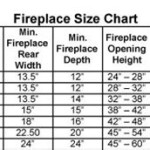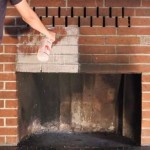Wood Fireplace Mantels: Designs and Considerations
A fireplace mantel serves as a focal point within a room, drawing attention to the warmth and ambiance of the fire while providing a surface for decoration and personal expression. Wood mantels, in particular, offer a timeless appeal due to their natural beauty, versatility, and ability to complement a wide range of architectural styles. Selecting the appropriate wood mantel design requires careful consideration of various factors, including the existing décor, the size and style of the fireplace, and the desired aesthetic.
The function of a wood mantel extends beyond mere aesthetics. It can provide a practical shelf for displaying photographs, artwork, candles, or other decorative items. Furthermore, a mantel can serve as a protective barrier, shielding combustible materials from the direct heat of the fire. The selection of wood type, finish, and design should be aligned with both the functional and decorative requirements of the space.
Key Considerations Before Selecting a Wood Mantel
Before embarking on the selection process, a comprehensive assessment of several key factors is crucial. These factors will inform the design choices and ensure the chosen mantel integrates seamlessly into the existing environment.
First,
fire safety
standards must be adhered to. Building codes typically specify minimum clearances between the top of the fireplace opening and the bottom of the mantel. These clearances are designed to prevent the mantel from overheating and potentially igniting. Local building codes should be consulted to determine the specific requirements for the installation area.Second, the
style of the fireplace
and the surrounding room must be considered. A rustic, stone fireplace often pairs well with a reclaimed wood mantel, while a modern, minimalist fireplace may be better suited to a sleek, contemporary design. The overall aesthetic of the room should guide the choice of wood type, finish, and mantel design to ensure a cohesive and harmonious look. The color and texture of the surrounding walls, flooring, and furniture should also be taken into account.Third, the
dimensions of the fireplace
and the available wall space are critical factors. The mantel should be proportional to the fireplace opening and the surrounding wall. A mantel that is too large can overwhelm the space, while a mantel that is too small may appear insignificant. Careful measurements of the fireplace width, height, and depth are necessary to determine the appropriate mantel size. The height of the ceiling and the overall scale of the room should also be considered.Types of Wood Mantel Designs
The variety of wood mantel designs available is extensive, ranging from traditional and ornate to modern and minimalist. Each design offers a unique aesthetic and can be tailored to complement various architectural styles.
Traditional Mantels: These mantels often feature intricate carvings, moldings, and detailing. They are typically crafted from hardwoods such as oak, maple, or cherry and are finished with a rich stain or paint. Traditional mantels are well-suited to formal living rooms or spaces with classic architectural details. Common features include fluted pilasters, dentil moldings, and decorative corbels. These mantels often evoke a sense of history and elegance.
Rustic Mantels: Rustic mantels are characterized by their natural, unrefined appearance. They are often crafted from reclaimed wood, such as barn beams or driftwood, and may feature knots, cracks, and other imperfections that add to their character. Rustic mantels are ideal for creating a warm and inviting atmosphere in a cabin, farmhouse, or other informal space. The texture and grain of the wood are typically emphasized, and the finish is often minimal to preserve the natural look. These mantels offer a sense of authenticity and connection to nature.
Modern Mantels: Modern mantels are typically sleek and minimalist in design. They often feature clean lines, simple shapes, and a lack of ornamentation. Modern mantels are often crafted from hardwoods or engineered wood products and are finished with a smooth paint or stain. They are well-suited to contemporary homes or spaces with a minimalist aesthetic. Common features include floating shelves, geometric shapes, and integrated lighting. These mantels offer a sense of sophistication and simplicity.
Floating Mantels: Floating mantels are a popular choice for modern homes. They appear to float on the wall, creating a clean and minimalist look. Floating mantels are typically attached to the wall using hidden brackets or supports. They can be crafted from a variety of materials, including wood, concrete, or metal. Floating mantels offer a sense of lightness and airiness, and they can be easily customized to fit any space.
Corner Mantels: Corner mantels are designed to fit into the corner of a room. They are a space-saving option that can be used to create a focal point in a room with limited wall space. Corner mantels can be crafted from a variety of materials and can be designed in a variety of styles, from traditional to modern. They offer a unique and stylish way to add a fireplace to a corner of a room.
Wood Selection and Finishing Considerations
The choice of wood and finish significantly impacts the overall appearance and durability of the mantel. Different wood species possess distinct characteristics that contribute to the aesthetic and functional qualities of the mantel.
Hardwoods: Hardwoods such as oak, maple, cherry, and walnut are known for their strength, durability, and beautiful grain patterns. They are typically more expensive than softwoods, but they offer a longer lifespan and a more refined appearance. Oak is a popular choice for its durability and distinctive grain. Maple is a lighter-colored hardwood with a smooth, even texture. Cherry is known for its rich, reddish-brown color and elegant grain. Walnut is a dark, luxurious hardwood with a distinctive grain pattern.
Softwoods: Softwoods such as pine, fir, and cedar are less expensive than hardwoods and are often used for rustic or informal mantels. They are typically softer and more prone to dents and scratches than hardwoods. Pine is a light-colored softwood with a knotty grain pattern. Fir is a stronger softwood with a straighter grain. Cedar is known for its aromatic scent and natural resistance to decay.
Reclaimed Wood: Reclaimed wood, such as barn beams or driftwood, offers a unique and sustainable option for wood mantels. It often features a weathered and aged appearance that adds character and charm to a space. Reclaimed wood can be sourced from a variety of sources, including old barns, factories, and warehouses. It is important to ensure that reclaimed wood is properly cleaned and treated before being used for a mantel.
The finish applied to the wood mantel also plays a crucial role in its appearance and durability. Different finishes offer varying levels of protection against moisture, scratches, and fading.
Staining: Staining enhances the natural grain and color of the wood. It can be used to create a variety of shades and tones, from light and airy to dark and rich. Stains are typically applied in multiple coats to achieve the desired color intensity. A clear topcoat is often applied over the stain to protect the wood and provide a durable finish.
Painting: Painting provides a solid color finish that can be used to match or complement the surrounding décor. Paint can be applied in a variety of sheens, from matte to gloss. It is important to use a high-quality paint that is specifically designed for wood. Multiple coats of paint are typically required to achieve a smooth and even finish.
Sealing: Sealing protects the wood from moisture, scratches, and fading. Sealers can be applied over stain or paint to provide a durable and long-lasting finish. Common types of sealers include polyurethane, varnish, and lacquer. The choice of sealer will depend on the desired level of protection and the aesthetic preferences. It is important to follow the manufacturer's instructions when applying a sealer.
Distressing: Distressing techniques can be used to create a weathered and aged appearance on a wood mantel. These techniques may involve sanding, scraping, or applying antiquing glazes. Distressing can add character and charm to a mantel, making it look like it has been around for years.

7 Contemporary Fireplace Mantel Design Ideas For Interior Designers
:max_bytes(150000):strip_icc()/sandandsisal-bdc76ad938a44d28ae9e23ef6c9fa331.jpg?strip=all)
17 Diy Fireplace Mantel Plans

10 Rustic Fireplace Mantel Ideas Blog Red Door

40 Fabulous Fireplace Design Ideas For Any Budget Or Style

53 Best Fireplace Mantel Designs To Ignite Your Creativity Classic White Mantels Living Room With

Collection Of Premium Wood Fireplace Mantels Dogberry

Mount Vernon Mantels Custom Wood Fireplace Manufactured To Your Specifications

50 Cozy Fireplace Ideas Best Mantel Decor

7 Design Ideas Using Dark Wood Fireplace Mantels Elmwood Reclaimed Timber

Fireplace Mantels Sawtooth Ridge Woodworks








